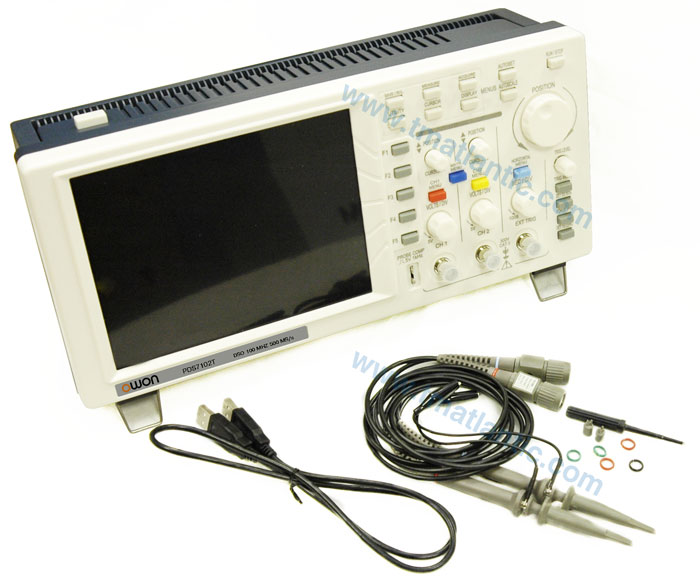Download Free Software Owon Oscilloscope Hack

Jun 29, 2016 Reverse Engineering The OWON SDS7102 Oscilloscope. And the software has one or two annoying bugs. 23 thoughts on “ Reverse Engineering The OWON SDS7102 Oscilloscope ”.
If there is one instrument that makes an electronic engineer’s bench, it is the oscilloscope. The ability to track voltages in the time domain and measure their period and amplitude is one akin to a light in the darkness, it turns a mere tinkerer with circuits into one in command of them. Straightforward add-on circuits can transform a basic oscilloscope into a curve tracer, frequency response display, and much more, and modern oscilloscopes offer a dizzying array of useful measurement features unimaginable to engineers only a few years ago. And I need your help to pick a new one. They don’t make ’em like they used to!
My Cossor portable oscillograph. The Status Quo My first oscilloscope came my way in the early 1980s when my school had a lab clear-out. It’s a dual-beam Cossor, probably from the 1950s, and it proudly boasts a 2MHz – or should I say “2 Mc/s”! The maker’s plate calls it a “Portable Oscillograph”, because it does have a handle on top and if you are a weight-lifter you can probably carry it some distance. Dusting it off from the garage recesses for this article brought back memories of all those hacked-together circuits made from old TV parts, of seeing for myself the mysteries of the PAL colour burst, and of my. The Cossor clearly wasn’t going to cut it for an electronic engineering student, so sometime about 1990 I made the trip to the Aladdin’s Cave of, and bought a bargain Gould dual-scan ‘scope from the mid 1970s.
It has a 20MHz bandwidth, and has been my trusty companion ever since. It’s typical of everyday ‘scopes of the era, and since ‘scopes like it can be found for little more than beer money these days I’d have no hesitation recommending one to anybody looking for a basic piece of test equipment. A quarter century later though, I have a ‘scope problem. As a radio amateur I’ve always wrestled with the Gould’s low bandwidth. It’s also not the smallest of instruments, and the sheer number of things new ‘scopes can do these days are something I just can’t ignore.
The carburettor K-68, which was used on scooters of the Tula type (later the 'Ant'), motorcycles 'Ural' and 'Dnepr', works in a similar way. Components All types of carburettors have different components. Similarly, the English word 'carburetor' technically means 'an increase in the carbon content.' Karbyurator k151s regulirovka. But modern devices have a number of common characteristics, including: • Air channel (Venturi tube). In French, a carburer simply means 'combining (something) with carbon'.
It’s time I bought a new ‘scope, and this is where you come in. Choices, Choices If I held my finger over the badge, would you be able to distinguish it from its competition?
Image: SIGLENT TECHNOLOGIES CO.,LTD [PD], via To narrow down the selection a little, consider that I won’t be able to spend thousands of pounds on the ‘scope I’d really like. The people who sell ‘scopes at the top of the market will have to wait for my ship to come in. And USB ‘scopes aren’t my thing, I prefer a stand-alone instrument.
Instead I will be looking where I suspect a lot of you will too, at the lower-end Chinese digital ‘scopes from brands like Rigol, Owon, Siglent, Hantek, and others. I’m very familiar with more than one of them from use in contracts, hackspaces, and other people’s benches. Filldocuments kryak. They are all compact instruments with fairly similar specifications between brands, in fact many models look similar enough to have been made on the same production lines. They will not perhaps have the spec of the multi-thousand-pound ‘scope when it comes to the edges of the envelope in noise or even sensitivity, but the performance they deliver for the price is more than enough for my purposes. Why buy a DS1074 when a DS1054 will do. Image: Alex P. Kok (Own work) [CC BY-SA 4.0], via.So given an array of outwardly similar ‘scopes which still occupy a range of prices over the budget end of the market, how should I choose?
Once I’ve made the decision that I only need 2 channels rather than 4, my basic requirement above all else is for bandwidth, so that seems a good place to start. But even there the picture is muddled, it seems to be the norm for these instruments to have a quoted bandwidth which can be extended with a software hack.
Most well-known are the Rigol 1050 series, 50MHz ‘scopes, but they not alone by any means. Perhaps the manufacturers permit such illicit upgrades because they are a valuable sales tool. My gut feeling though is to buy the highest bandwidth ‘scope I can afford and see a later upgrade as a bonus, but not necessarily to do it straight away as I prefer my instruments unbricked and with warranties. Even homing in on the bandwidth doesn’t give me as clear a picture as it should. For somewhere between £200 and £300 (About $260 to $400) when all taxes are paid, I can buy any of a spread of Chinese 2-channel 100MHz ‘scopes with similar spec.